NASA's Ingenuity Mars Helicopter has revealed that wind speeds on Mars are higher than previously thought, reaching up to 25 m/s during its 72 flights. The data, collected by using the helicopter's own tilt to measure wind strength, provides a new understanding of the Martian atmosphere.
This view of NASA ’s Ingenuity Mars Helicopter was generated using data collected by the Mastcam-Z instrument aboard the agency’s Perseverance Mars rover on Aug. 2, 2023, the 871st Martian day, or sol, of the mission, one day before the rotorcraft’s 54th flight. Credit: NASA /JPL-Caltech/ASU/MSSS\One of my gripes with ‘The Martian’ movie was the depiction of the winds on Mars .
The lower air density means that the sort of high-speed winds we might experience on Earth carry far less of an impact on Mars. During its 72 flights in the Martian air, NASA’s ingenuity helicopter took meticulous records of the conditions. A new paper has been released and reports upon the wind speeds on the red planet at various altitudes. Previous models suggested wind speeds would not exceed 15 m/s but Ingenuity saw speeds as high as 25 m/s.\Of all the planets in our Solar System, Mars is perhaps the most similar to Earth, similar but with stark differences. The weather on Mars is harsh and extreme, characterized by cold temperatures, a rarefied atmosphere, and dust storms. The average temperature is around -60°C but it can reach a toasty 20°C in summer near the equator. It’s atmosphere is composed mostly of carbon dioxide and is about 100 times thinner than Earth’s so it offers little insulation or protection from solar radiation. On occasion, the winds on Mars whip up global dust storms that obscure the planet’s surface from view. Our model of the Martian atmosphere was believed to be fairly accurate, that is until Ingenuity arrived and completed more than 70 successful flights. As part of the Mars 2020 mission and the first aerial vehicle to successfully complete powered flight on another world, Ingenuity revealed some surprising conditions. Surprisingly too perhaps, the first attempt at powered flight was supposed to be a technology demonstration but instead, it provided high-resolution images to help direct the ground-based rover and collected data from the atmosphere and became a key part of Mars 2020. One of the outcomes from Ingenuity’s flights was a better understanding of Martian winds.\A paper written by Brian Jackson and his team in the Planetary Society Journal explained their rather ingenious approach. Knowing that the payload was severely limited on board, the decision was taken to use Ingenuity itself to confirm wind speeds. Previous studies had shown that the tilt of a stably hovering drone can be used to calculate speeds. Drones produce forward thrust by tilting in the direction they need to move, if they are stable and in a hover yet the wind is blowing, the drone will drift. Instead, and to counteract the drift, the drone tilts flying into the wind to maintain position relative to the ground, tilting more in a stronger headwind. Measuring the tilt is relatively straightforward thanks to a collection of engineering sensors, cameras, and accelerometers. With all of the information gathered by these onboard pieces of equipment and returned to Earth, the analysis and calculation of the drone at different altitudes have enabled the wind speeds to be accurately calculated. The results were a surprise, showing that the winds on Mars were generally higher than anticipated. Speeds were measured at altitudes from 3 to 24 meters and were found to be blowing at anything up to 25 m/s. This perhaps is a result of Ingenuity’s unique capability of being able to measure speeds at different altitudes over a period of time. Previous measurements have been achieved from probes as they have descended through the atmosphere or from probes on the ground. Taking the success of Ingenuity forward, mission specialists working upon the Dragonfly rotorcraft that will be visiting Titan hope to be able to replicate the results and gain a better understanding of its wind profile too
MARS NASA INGENUITY WIND ATMOSPHERE SPACE EXPLORATION DRONE
United States Latest News, United States Headlines
Similar News:You can also read news stories similar to this one that we have collected from other news sources.
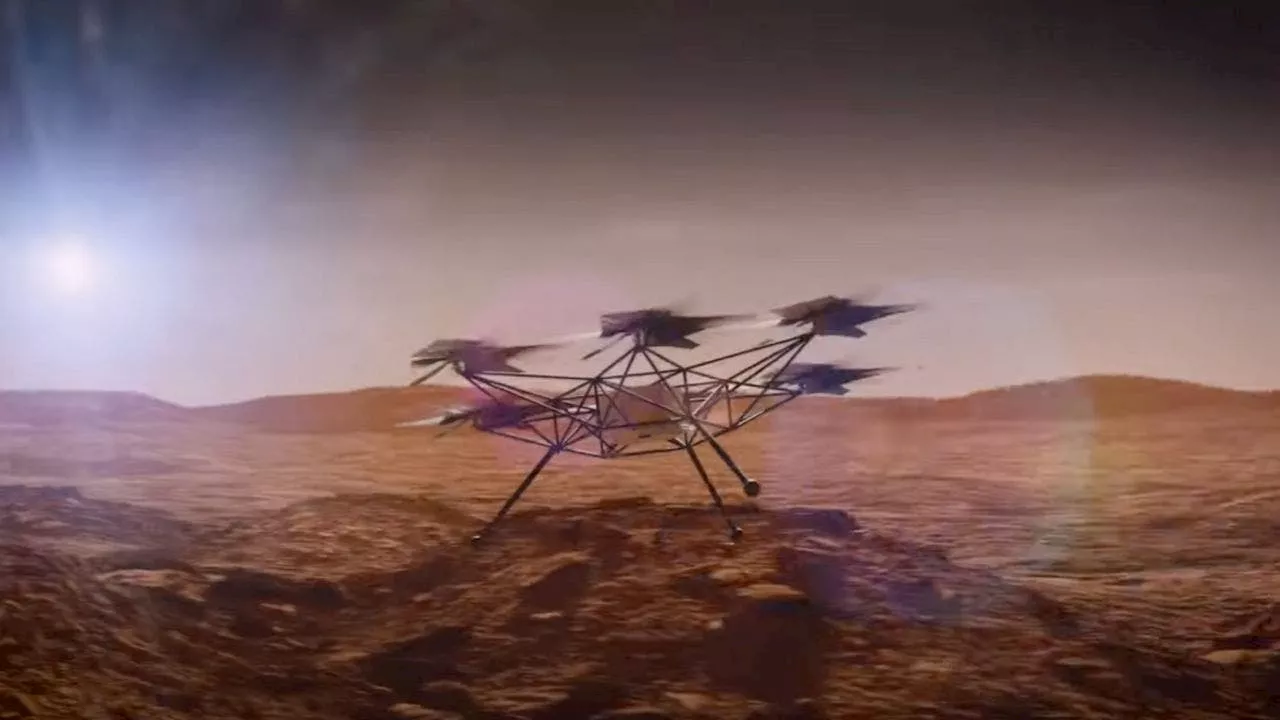 NASA Plans Next-Gen Mars Helicopter to Revolutionize ExplorationFollowing the success of the Ingenuity helicopter on Mars, NASA is developing a larger, more capable aerial explorer. This next-generation helicopter will feature six rotors, a size comparable to an SUV, and the ability to carry scientific payloads and cover a wider range, enabling more extensive exploration of the red planet.
NASA Plans Next-Gen Mars Helicopter to Revolutionize ExplorationFollowing the success of the Ingenuity helicopter on Mars, NASA is developing a larger, more capable aerial explorer. This next-generation helicopter will feature six rotors, a size comparable to an SUV, and the ability to carry scientific payloads and cover a wider range, enabling more extensive exploration of the red planet.
Read more »
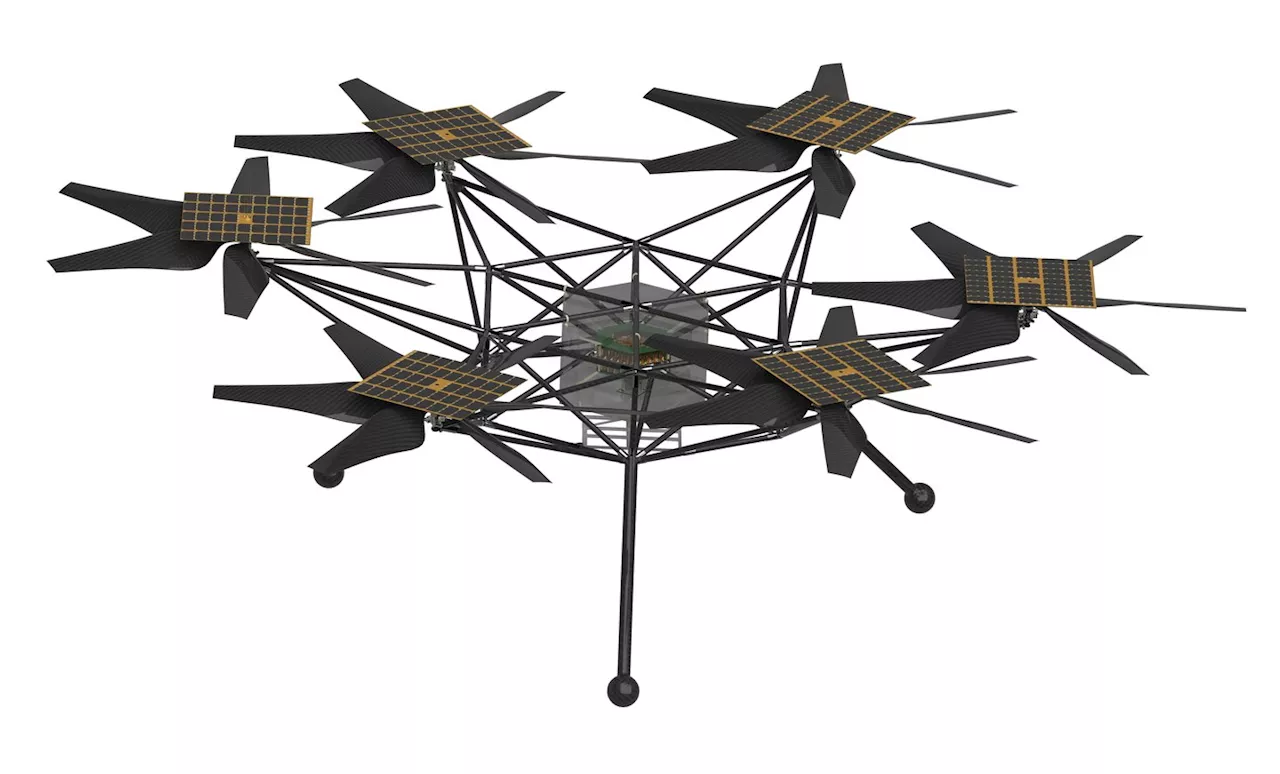 NASA Reveals Next Generation Mars Drone: Mars ChopperFollowing the success of Ingenuity, NASA unveils plans for its next-generation Mars drone, the Mars Chopper.
NASA Reveals Next Generation Mars Drone: Mars ChopperFollowing the success of Ingenuity, NASA unveils plans for its next-generation Mars drone, the Mars Chopper.
Read more »
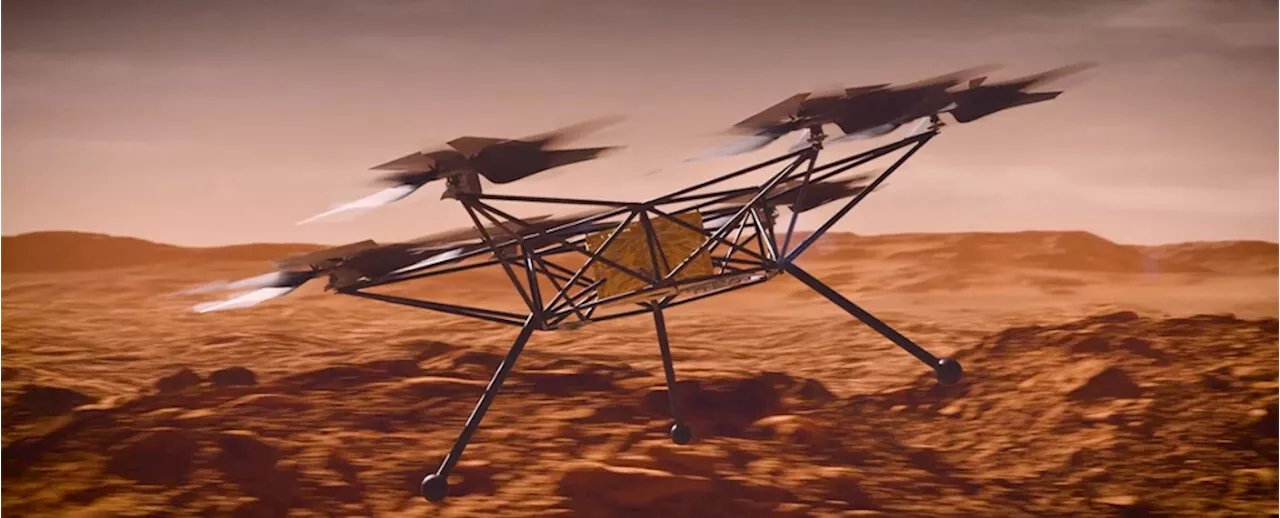 Ingenuity: Proving Powered Flight on MarsIngenuity, a small helicopter drone, achieved the first powered flight on another planet in April 2021. This groundbreaking feat demonstrated the viability of aerial exploration on Mars.
Ingenuity: Proving Powered Flight on MarsIngenuity, a small helicopter drone, achieved the first powered flight on another planet in April 2021. This groundbreaking feat demonstrated the viability of aerial exploration on Mars.
Read more »
 Ingenuity's Flight Data Reveals Surprising Martian WindsNASA's Ingenuity helicopter's 72 flights on Mars have provided new insights into the planet's wind speeds. The helicopter's data, collected using its onboard sensors and cameras, showed wind speeds up to 25 m/s, higher than previous models predicted. This information was gathered by analyzing the tilt of Ingenuity as it hovered in the Martian atmosphere.
Ingenuity's Flight Data Reveals Surprising Martian WindsNASA's Ingenuity helicopter's 72 flights on Mars have provided new insights into the planet's wind speeds. The helicopter's data, collected using its onboard sensors and cameras, showed wind speeds up to 25 m/s, higher than previous models predicted. This information was gathered by analyzing the tilt of Ingenuity as it hovered in the Martian atmosphere.
Read more »
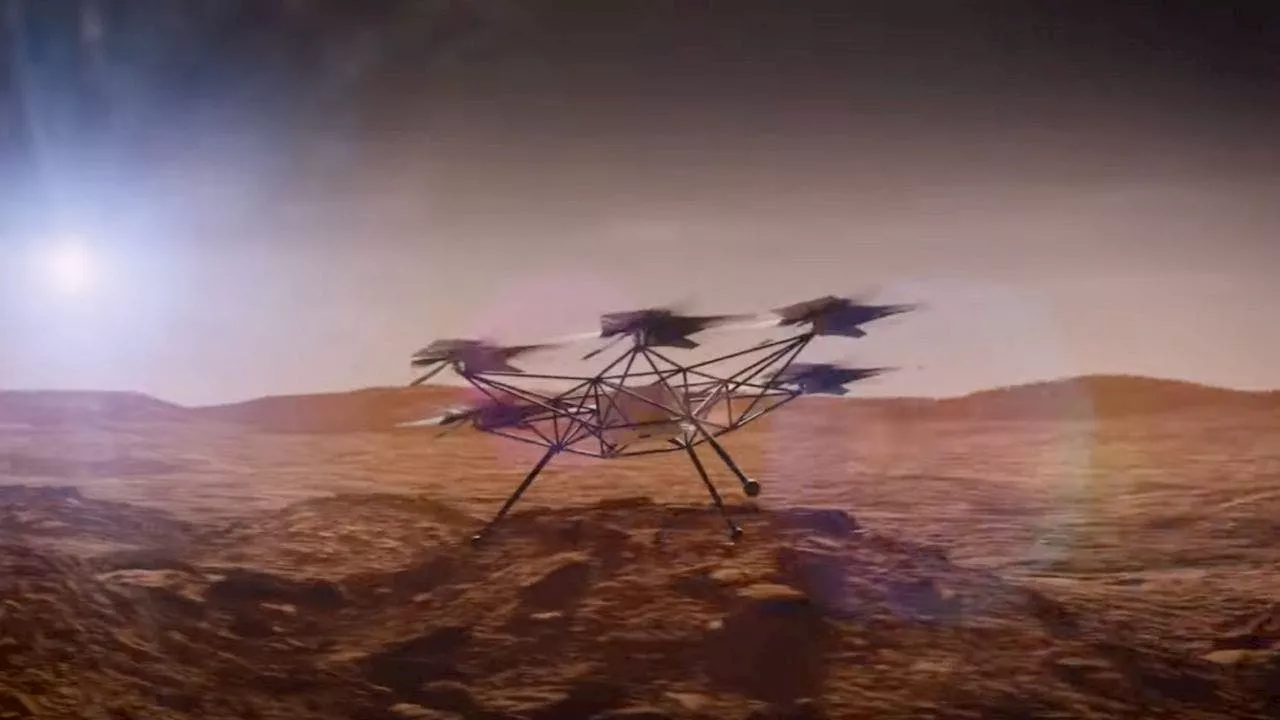 NASA's Martian helicopter promises unprecedented views of the red planetNASA's Ingenuity helicopter, which flew on Mars in April 2021, became the first aircraft to achieve powered, controlled flight on a planet other than Earth.
NASA's Martian helicopter promises unprecedented views of the red planetNASA's Ingenuity helicopter, which flew on Mars in April 2021, became the first aircraft to achieve powered, controlled flight on a planet other than Earth.
Read more »
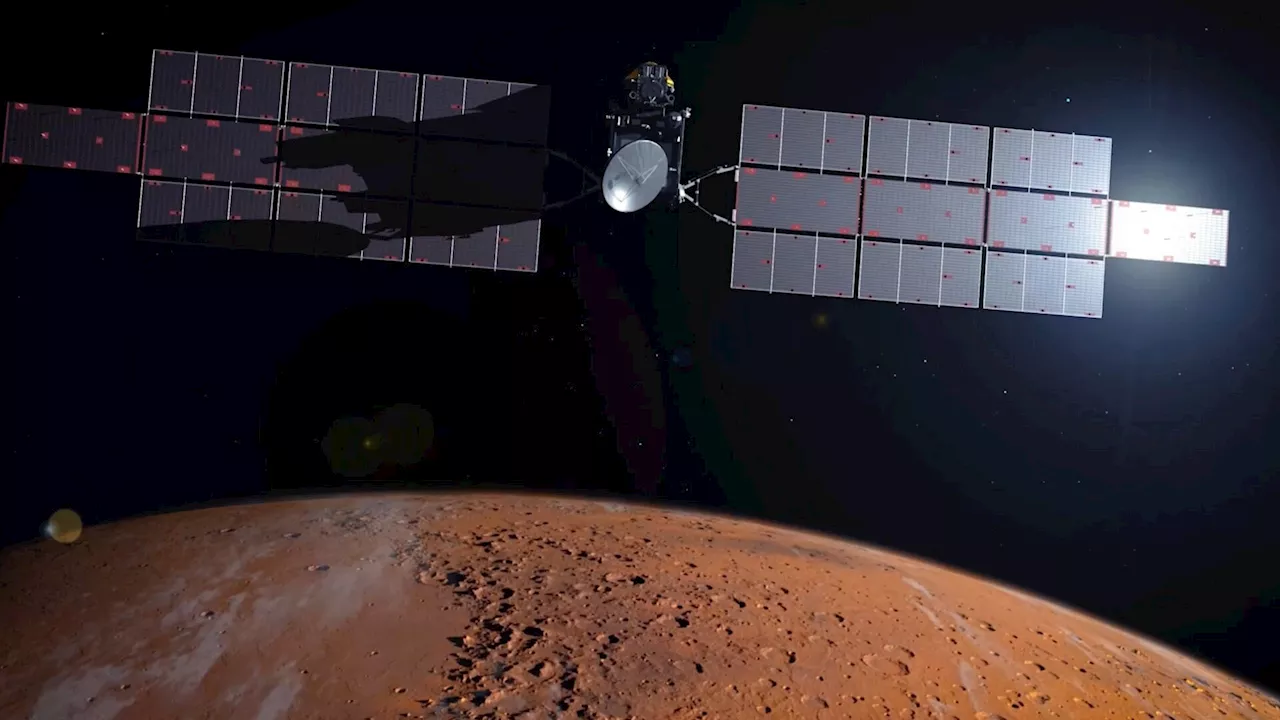 NASA’s Big Mars Update: How to Watch the Upcoming Sample Return RevealThe space agency will provide a broadcast update on the marquee mission that is intended to recover samples of Martian rock for study on Earth.
NASA’s Big Mars Update: How to Watch the Upcoming Sample Return RevealThe space agency will provide a broadcast update on the marquee mission that is intended to recover samples of Martian rock for study on Earth.
Read more »
